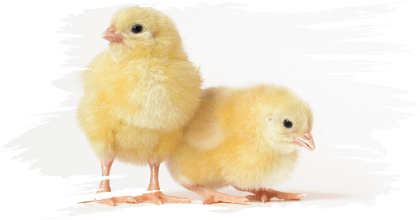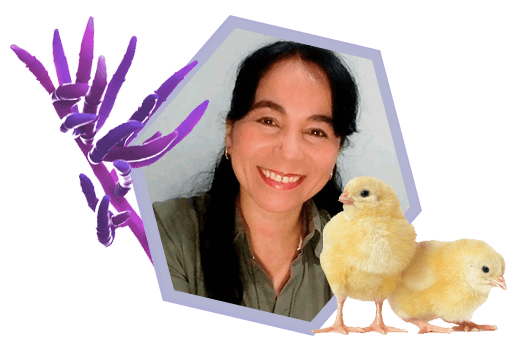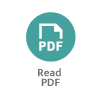Dr. Coloma is a veterinarian with a solid background and professional experience in the agricultural sector. She obtained her degree in Veterinary Medicine at Alas Peruanas University in Peru and later continued her education with postgraduate studies in Poultry Health at the Universidad Nacional Mayor de San Marcos in Peru and a Master’s Degree in Veterinary Medicine, specializing in mycotoxins at the Federal University of Santa Maria in Brazil where she was also a fellow of the Laboratory of Mycotoxicological Analysis of the UFSM.
Currently, she teaches Veterinary Microbiology at the Professional School of Veterinary Medicine of the Ricardo Palma University in Peru and teaches Food Technology and Hygiene at the Faculty of Veterinary Medicine of the Universidad Nacional Mayor de San Marcos in Peru. Additionally, through her company ZC Consulting, she provides consulting services on mycotoxins, the use of additives and poultry production processes.
His experience and expertise are reflected in the publication of articles in scientific and technical journals focused on the field of mycotoxins, highlighting his commitment to research and dissemination of knowledge in this specific field of veterinary medicine.

Dr. Coloma, what inspired you to become a veterinarian and specialize in the field of mycotoxins?
My interest in veterinary medicine initially stemmed from my love for animals and nature. Later, when I decided to study veterinary medicine, I explored the different career fields and at the university that range of possibilities opened up a lot more.
![]() At the university I decided that I wanted to be a researcher and when I graduated, I focused on mycotoxins because I realized that there was still a lack of knowledge on the subject in Peru.
At the university I decided that I wanted to be a researcher and when I graduated, I focused on mycotoxins because I realized that there was still a lack of knowledge on the subject in Peru.
⇰ So, step by step I specialized, looking for the best in the area and here I am offering my services through the company ZC Consulting.


Could you tell us about your first steps in the veterinary profession?
I have always been fortunate enough to get to places where I have been able to learn a lot. I have been surrounded by people who know much more than me and were willing to teach me.
One of the first places I went to was Bioservice laboratory here in Peru where they work a lot on diagnostics and sampling, including analysis using different methodologies.
![]() Later, I went on to work at poultry farms where I was more in contact with the productive part and with the producers, which allowed me to learn more about their perspective and the processes that are carried out, such as the reception and processing of supplies, and the evaluation of production parameters in the field.
Later, I went on to work at poultry farms where I was more in contact with the productive part and with the producers, which allowed me to learn more about their perspective and the processes that are carried out, such as the reception and processing of supplies, and the evaluation of production parameters in the field.


Who have been your references or mentors in your professional career so far?
As I was saying, I have been blessed to be surrounded by people who are very well prepared, very qualified and who, in addition to being great professionals, are people who like to teach everything they know.
Among my main mentors I consider Dr. Ysabel Koga, the owner of Bioservice Laboratory.
Later, in Brazil, Dr. Carlos Augusto Mallmann greatly influenced my professional career and training, as has Dr. Paulo Dilkin who has given me their support and advice.
![]() The staff at each of the places where I have worked has contributed to my professional training.
The staff at each of the places where I have worked has contributed to my professional training.


What do you enjoy most about your work as a veterinarian and as a university professor?
Veterinary medicine is a very beautiful career.
![]() As a teacher, I love being in contact with the students. I put myself in the position of a mother and think about what I would expect from a teacher.
As a teacher, I love being in contact with the students. I put myself in the position of a mother and think about what I would expect from a teacher.
⇰ I expect them to be demanding and to bring out their full potential, but always in an environment of respect. That is what I instill in my students.

What has been the biggest challenge you have faced so far in your professional career and how did you overcome it?
Challenges present themselves constantly.
 I believe that reaching agreements on ideas is the most important challenge in any profession, not only in veterinary medicine. Agreements with bosses, peers, and clients.
I believe that reaching agreements on ideas is the most important challenge in any profession, not only in veterinary medicine. Agreements with bosses, peers, and clients.
At ZC Consulting, for example, I work with a group of people who are specialists in different areas.
⇰ When we make proposals to a client, we must reach an agreement and make ourselves understood, explaining the improvements and benefits that are intended to be obtained.


Focusing more on mycotoxins, could you explain what emerging and masked mycotoxins are and why they are so important in agriculture and animal health?
Generally, when we talk about mycotoxins, which are toxic metabolites produced by filamentous fungi, we always mention the most prevalent mycotoxins:
- ⇰ Aflatoxins
- ⇰ Fumonisins
- ⇰ Trichothecenes
- ⇰ Zearalenone
- ⇰ Ochratoxin
- ⇰ Ergot alkaloids
However, there are also masked mycotoxins which are metabolites derived from prevalent mycotoxins due to biological-chemical reactions that occur in the animal’s organism or in the plant itself or during feed processing.
 For example, deoxynivalenol (DON) binds to a glucosate complex, generating DON-3G.
For example, deoxynivalenol (DON) binds to a glucosate complex, generating DON-3G.
![]() We are still developing analytical methodologies for these masked mycotoxins.
We are still developing analytical methodologies for these masked mycotoxins.
If the animal consumes a masked mycotoxin, when it is metabolized, it can be transformed, re-generating the original mycotoxin.
As for emerging mycotoxins, they are mycotoxins that are not routinely determined.
For example, the methodologies for analyzing beauvericin and enniatins were not standardized for routine use in laboratories.


How does multi-contamination, or the simultaneous presence of several mycotoxins, affect animal production and food safety?
Mycotoxigenic fungi can produce several mycotoxins.
For example, Fusarium fungi produce fumonisins, trichothecenes (such as deoxynivalenol, T-2 and HT-2 toxins, and diacetoxyscirpenol) and zearalenone. Thus, when the fungus produces mycotoxins, it produces several of them, not just one.
 If we have an ingredient that is contaminated, we can be almost certain that it is contaminated with more than one mycotoxin, which increases the risks.
If we have an ingredient that is contaminated, we can be almost certain that it is contaminated with more than one mycotoxin, which increases the risks.

Knowing the harmful effect of a mycotoxin, we have to add the harmful effect of the others that may also be present, since their combined effects will affect the animal, not only from the physiological point of view, but also at the level of its production parameters.
 On the other hand, if the animal consumes a mycotoxin, it can metabolize it and the metabolites can be transferred to its by-products, such as milk or eggs, reaching us, the final consumers, which represents an additional risk from the point of view of food safety.
On the other hand, if the animal consumes a mycotoxin, it can metabolize it and the metabolites can be transferred to its by-products, such as milk or eggs, reaching us, the final consumers, which represents an additional risk from the point of view of food safety.Another important issue when we talk about multicontamination is climate change.
Climate change is occurring worldwide, not only in Latin American countries.
It is causing that we no longer know when we can expect to find the prevalent mycotoxins that are usually detected at certain times of the year.
 Thus, prevalence is more unpredictable throughout the year, in addition to emerging and masked mycotoxins.
Thus, prevalence is more unpredictable throughout the year, in addition to emerging and masked mycotoxins.
All this increases the health risks for the animals as well as for the final consumers, who are us.

Considering your experience, what is the most significant effect or impact that mycotoxins have on poultry farming?
When talking about poultry farming, we are referring to the production of protein for human consumption.
The producer and the entrepreneur, when starting the production process, obviously seek to make money.
When exposed to mycotoxins, the production parameters of the animals are greatly altered, affecting feed consumption, weight gain, feed conversion and kg/m2 produced.
On the other hand, mycotoxins greatly affect the immune response capacity of animals, making them very susceptible to any infectious process.
![]() The affectation of the immune response and the productive parameters has economic repercussions.
The affectation of the immune response and the productive parameters has economic repercussions.
So, what I always suggest to clients or people who come to my conferences is to evaluate their production costs.
 They should evaluate the impact of having problems with mycotoxins in comparison with not having them or having managed them adequately. They will realize that mycotoxin contamination in feed results in significative differences at a financial level.
They should evaluate the impact of having problems with mycotoxins in comparison with not having them or having managed them adequately. They will realize that mycotoxin contamination in feed results in significative differences at a financial level.

What would be the most effective preventive measures that producers can implement to protect their animals from the risks of mycotoxicosis?
The use of anti-mycotoxin additives is necessary but always backed up by the analysis of the ingredients, knowing what we are working with and at what levels mycotoxins are present.
Anti-mycotoxin additives should:
- ⇰ Be proven to be effective
- ⇰ Not be harmful to the animal
- ⇰ Be effective against mycotoxins present in the ingredients
- ⇰ Be affordable and not require high inclusion levels
Another important aspect is the control of supplies, taking adequate samples and sending them to the laboratory to have a record of the levels of mycotoxins present.
⇰ For example, separating corn, using a densimetric table and evaluating the percentage of broken kernels and the percentage of dust that may come in the inputs, and controlling and parameterizing each of these variables.

In your research you have studied the prevalence and levels of mycotoxins in different raw materials. Why is it important to monitor these raw materials and how can producers access this information to apply it to their farms?
When it comes to monitoring, good sampling is essential.
 Inadequate sampling can generate more than 85% error in the results.
Inadequate sampling can generate more than 85% error in the results.
In case of uncertainty about the proper sampling procedure, consult the suppliers or the laboratories that are going to evaluate the sample. Undergo training to learn how to do proper sampling and keep track of suppliers.
 Know which are the best suppliers and remember that the input normally arrives with a certificate of analysis when it leaves the supplier’s port, but when it arrives at its destination, the mycotoxin levels may have changed a lot because the fungus is still producing the toxin. Therefore, it is advisable to sample and have a history upon receipt at the port, at the farm or at the processing plant.
Know which are the best suppliers and remember that the input normally arrives with a certificate of analysis when it leaves the supplier’s port, but when it arrives at its destination, the mycotoxin levels may have changed a lot because the fungus is still producing the toxin. Therefore, it is advisable to sample and have a history upon receipt at the port, at the farm or at the processing plant.
In this way, you will have an epidemiological study and you will know which mycotoxins are present, at which levels and at what time of the year, as well as which additive is recommended to use.
There are several methods that producers can use on their farms to evaluate mycotoxin contamination, for example, rapid kits.
For example, if you notice that the corn has been coming in with a very high percentage of broken kernels, it should be monitored periodically.
The person who receives the corn must also be trained to be able to decide, if the conditions require it, even if it is the moment for monitoring, to perform it in order to reduce the risks of mycotoxicosis in the farms.

What can you tell us about your most recent research on mycotoxins? Any scoop you can share with us?
We have been seeing for quite some time that mycotoxins affect poultry pigmentation and egg yolk pigmentation.

There are markets that demand higher pigmentation and others that demand lower pigmentation.
Mycotoxins damage the gastrointestinal epithelium of the birds, prevent the absorption of nutrients and pigments used in the diet at the end of the season.
We are now performing the histopathological evaluation to see the effects on poultry, how they change the absorption of nutrients and pigments, and how it is reflected in the poultry and their productive parameters.
 The market sometimes punishes in price when adequate pigmentation is not achieved, which should also be included in the cost calculation.
The market sometimes punishes in price when adequate pigmentation is not achieved, which should also be included in the cost calculation.This is one of the last evaluations we are performing. We do not yet have the results, but we hope to be able to bring them out soon.

Finally, before we bid you farewell, what advice would you give to those who are interested in pursuing a career in veterinary medicine and even specializing in the subject of mycotoxins?
Understand that veterinary medicine is a whole world of possibilities. It is a very noble and beautiful career that can give you a lot of satisfaction.
If one was going to specialize in the field of mycotoxins, one must master immunology and nutrition. One should be able to link nutrition with mycotoxicosis, and the veterinary medical sanitarian should coordinate with the nutritionist.
One must have the knowledge to reach agreements, make adequate and timely suggestions, always in a respectful way.





 Micotoxicosis prevention
Micotoxicosis prevention